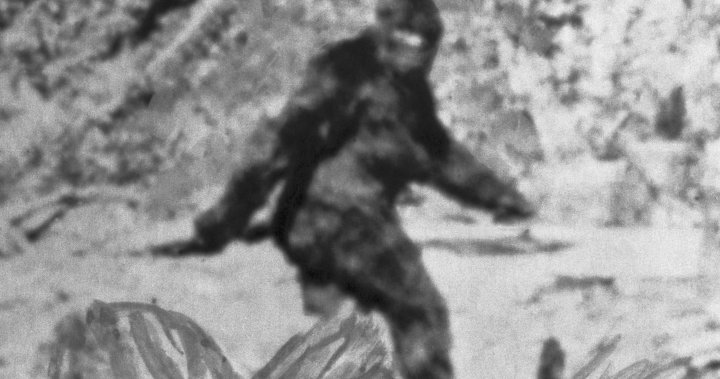For centuries the mystery surrounding Bigfoot has captured the imaginations of people across North America, but one data analyst now says there might be simple mathematical equation to explain the sightings.
In a new preprint study published online in bioRxiv, data analyst Floe Foxon writes that many sightings of elusive Sasquatch-looking figures could actually be black bears walking on their hind legs.
The study, poetically titled “If it’s there, could it be a bear?,” suggests that supposed Bigfoot sightings in Canada and the U.S. tend to increase when there’s a high population of black bears.
Read more:
U.S. high school students design ‘life-changing’ robotic hand for classmate
Read next:
Boy picks shipping container for hide-and-seek, ends up 2,500 km from home
“Sasquatch sightings were statistically significantly associated with bear populations such that, on the average, one ‘sighting’ is expected for every 900 bears. Based on statistical considerations, it is likely that many supposed Sasquatch are really misidentified known forms,” Foxon wrote.
In coming to his conclusion, Foxon looked at existing Sasquatch sightings data across North America, running statistical tests against bear populations in each province and state while adjusting for land area and human population.
A map created to back his findings shows Bigfoot sightings overlapping with black bear populations, particularly on the West Coast.
Choropleth maps for sasquatch reports, black bear (Ursus americanus) populations, and human populations in the United States and Canada.
Floe Foxon
However, Florida and Texas seem to report a lot of Sasquatch sightings despite low black bear populations, and Floxon explains that in those cases people are likely spotting other animals or, perhaps, even other humans.
“Usually when people say they’ve seen something like Bigfoot they aren’t lying about what they think they saw,” he told The Telegraph newspaper. “But that doesn’t mean they aren’t mistaken.”
And while Foxon has offered a reasonable explanation for Bigfoot sightings, there’s another mythical monster folklore that he can’t quite explain.
In a separate preprint paper, also published online in bioRxiv, Foxon used math, once again, to demonstrate that the Loch Ness monster probably isn’t an eel, like many have hypothesized over the years.
He told the Telegraph that spotting a three-foot eel in the loch would be a one-in-50,000 chance, so spotting an animal close enough to be even considered the size of Nessie would basically be zero.
Although the chance of finding either is “vanishingly unlikely,” Foxon told the Telegraph, it “would be arrogant to say there is no chance.”
Foxon’s theory likely won’t stop people from ongoing attempts to prove Bigfoot’s existence. For decades, enthusiasts have been hunting for the folklore beast in the hopes of capturing airtight photo or video footage.
And while more and more North Americans have become interested in the beast’s existence over the years, the legend in Canada is rooted in Indigenous history, and the First Nations consider the mythological creatures sacred.
Read more:
Bigfoot in Canada: Inside the hunt for proof — or at least a good photo
Read next:
Priscilla Presley contests validity of Lisa Marie Presley’s will
Each tribe has its own set of beliefs. For the Sts’alies Nation on the West Coast, the Sasquatch is a protector of their land and an entity not to be meddled with, while the Haida people view it as a supernatural being to be respected.
To date, wildlife government agencies in Canada have not acknowledged the existence of Sasquatch, and the mythical creature remains the stuff of campfire stories and conspiracy theorists.
© 2023 Global News, a division of Corus Entertainment Inc.




